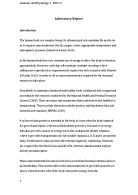Body In Action
Skeletal System
The axial is the main core of the skeleton where it consists of 80 bones in the central part of the skeleton. Cranium, Vertebral column, Ribs, Sternum. These bones consist of the main part of the axial part of the skeleton. You then have your Appendiculer this is the outer layer of the skeleton these are the limbs and bones such as arms and legs. Also bones like the clavicle the scapula feature in the appendicular which hold support and protection.
The vertebral column helps us move as it's the main structure of the skeleton this holds the body up straight and able to move the body from left to right. It also protects the nervous system in the body, if the nervous system ever got damaged this could lead to many problems such as physical disability. The 5 main parts of the vertebral column are the cervical, thoracic, lumbar, sacral and coccyx however the sacral and coccyx are fused together and move as one. The vertebrate column is made up of individual vertebrates; it's made up of a vertebral body, facet joints and a pedicle.
One of the five functions of a skeleton is to support which hold all the bones up, ligaments and cartilage up right, another one of the functions is protection these are the flat bones in the skeleton such as the cranium, scapula and ribs these protects the vital organs. The third function is red blood production; this comes in the long bone which is produced in the bone marrow found in the compact part of the long bone. The fourth function of the skeleton is movement, the joints which make up the skeleton makes us able to move our limbs and muscles in different directions. Different joints produce different movement you have the 4 different synovial joints. The ball and socket which is found in the shoulder, it has a range of movements such as Abduction, Adduction, Circumduction, Extension, Flexion and Rotation.
Skeletal System
The axial is the main core of the skeleton where it consists of 80 bones in the central part of the skeleton. Cranium, Vertebral column, Ribs, Sternum. These bones consist of the main part of the axial part of the skeleton. You then have your Appendiculer this is the outer layer of the skeleton these are the limbs and bones such as arms and legs. Also bones like the clavicle the scapula feature in the appendicular which hold support and protection.
The vertebral column helps us move as it's the main structure of the skeleton this holds the body up straight and able to move the body from left to right. It also protects the nervous system in the body, if the nervous system ever got damaged this could lead to many problems such as physical disability. The 5 main parts of the vertebral column are the cervical, thoracic, lumbar, sacral and coccyx however the sacral and coccyx are fused together and move as one. The vertebrate column is made up of individual vertebrates; it's made up of a vertebral body, facet joints and a pedicle.
One of the five functions of a skeleton is to support which hold all the bones up, ligaments and cartilage up right, another one of the functions is protection these are the flat bones in the skeleton such as the cranium, scapula and ribs these protects the vital organs. The third function is red blood production; this comes in the long bone which is produced in the bone marrow found in the compact part of the long bone. The fourth function of the skeleton is movement, the joints which make up the skeleton makes us able to move our limbs and muscles in different directions. Different joints produce different movement you have the 4 different synovial joints. The ball and socket which is found in the shoulder, it has a range of movements such as Abduction, Adduction, Circumduction, Extension, Flexion and Rotation.







